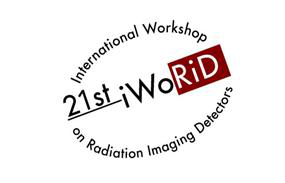Speaker
Description
In comparison to conventional tumor treatments with x-rays, the usage of carbon-ion beams in radiotherapy has shown better sparing of the healthy tissue that surrounds the tumor. This is possible due to the small lateral scattering and finite range of the ions within the tumor. As ions penetrate the tissue, nuclear fragmentation reactions occur between the incoming ions and the nuclei of the targeted tissue. This produces secondary ions which can emerge from the patient. These secondary ions are a candidate to be used to monitor the beam in the patient during the treatment application. The present work focuses at the assessment of an independent non-invasive monitoring method to evaluate the lateral beam positions in a clinic-like 12C treatment irradiation. The aim is to reach an uncertainty of 1 mm, which is the standard uncertainty at the clinic. This method is based on tracking of secondary ions outgoing from an irradiated object.
To evaluate the performance of this method, a treatment plan with carbon ions was designed to irradiate a typical target region within an anthropomorphic head model. To cover this target region with the desired dose of 3 GyE, several ion beam energies were used. Thus, the treatment plan contains 22 carbon-ion beam energies ranged from 163.09 MeV/n to 246.57 MeV/n. The dose was delivered using narrow pencil-like beams scanning laterally over the target cross-section. The irradiations were carried out at the Heidelberg Ion-Beam Therapy Center (HIT) in Germany.
The secondary ions emerging from the head phantom were measured by means of two silicon pixel detector layers, based on the Timepix3 technology developed at CERN by the Medipix3 Collaboration. Timepix3 detectors allow a simultaneous acquisition of time of arrival and energy deposition of the impinging ion in a dead-time-free data-driven readout. The Timepix3 detectors used in this investigation had a sensitive area of around 2 cm2. We developed a method to derive the pencil beam position from the measured secondary ion tracks. This enabled us to visualize the pencil beam scanning in the irradiated object as a function of time.
To quantitatively assess the precision of the presented method, we evaluated the distances of the measured pencil beam positions with respect to the information from the accelerator (see Figure 1). The mean value of the distance distribution of each beam energy was calculated. Most of these mean values were found to be within ±0.5 mm. The standard deviations of the distance distribution for each beam energy were also calculated, and they ranged from 0.98 mm to 3.39 mm. Moreover, we quantitatively evaluate the reproducibility of the presented method, which was found to be below 2 mm for beam energies greater than 197.58 MeV/n.
In conclusion, the visualization of the pencil beam scanning movement in the irradiated object was possible using this non-invasive secondary-ion based monitoring method. Furthermore, we have demonstrated the potential of the Timepix3 detector for this application. We quantitatively showed that the mean distances of the measured lateral beam positions with respect to those from the beam-record files were within ±0.5 mm. The precision of this method was found to be below 2 mm for higher energy layers. By having larger areas of detection, with this method uncertainties of about 1 mm could be reached.
